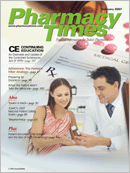case STUDIES
CASEONE:While on rotation in anambulatory care clinic, apharmacy student is askedto assess NW, a 67-year-oldwoman, during her annualphysical examination. Accordingto NW's chart, shehas a history of hypertension,type 2 diabetes (requiring insulin for the last 5 years),and obesity. Despite repeated attempts to convince her toquit, NW has continued to smoke 1 pack of cigarettes perday for the last 40 years and has had "a few drinks with dinner" for the last 25 years. NW's chart also states that hercurrent medications include furosemide, 40 mg by mouthdaily; ramipril, 5 mg by mouth daily; Neutral ProtamineHagedorn insulin; and regular insulin. The vital signs done bythe nurse are documented as height, 5 feet 3 inches;weight, 215 lb; body temperature, 98.6? F; blood pressure,170/90 mm Hg; heart rate, 90 beats/min; and respiratoryrate, 16 breaths/min.
The pharmacy student checks the clinic computers for thatday's results. The results for NW show that her basic metabolicpanel and complete blood count are within normal limits,except for a blood glucose level of 165 mg/dL. NW's fastinglipid profile shows a total cholesterol level of 320 mg/dL,a low-density lipoprotein level of 215 mg/dL, and a high-densitylipoprotein level of 30 mg/dL. Her Hgb A1c is reported as9%. A 24-hour urine collection reveals 0.7 g of protein.
The pharmacy student's preceptor asks him to utilize the7th Report of the Joint National Committee on Prevention,Detection, Evaluation, and Treatment of High Blood Pressure(JNC 7) guidelines to answer the following questions:
1. What is NW's goal blood pressure?
2. Is NW at her goal blood pressure?
CASE TWO:JA, a diaphoretic 35-year-oldman with a history ofdepression, presents to theemergency department ofthe local hospital via ambulance.JA's roommate calledthe ambulance when JAbegan having episodes ofhallucinations, accompaniedby hyperreflexia and tremors. JA is well-known to the emergencydepartment staff due to frequent narcotic-seekingbehavior and illicit drug abuse.
Upon arrival, his physical examination demonstrates musclerigidity and nystagmus. His vital signs are heart rate, 130beats/min; blood pressure, 175/95 mm Hg; respiratory rate,22 breaths/min; and body temperature, 101?F.
JA's roommate suspected that JA had overdosed on prescriptionmedications. JA had refilled his prescription for fluoxetine2 days earlier. When the roommate found the bottle,which should have contained a month's supply, the bottlewas empty. The roommate also noticed that his own bottleof meperidine was empty but should have had nearly 60tablets remaining. The roommate admits that they had beenusing cocaine shortly before JA's hallucinations and tremorsbegan.
JA is placed on a cardiac monitor and pulse oximeter. Torelieve his rigidity and agitation, 4 mg of intravenouslorazepam is quickly administered. Due to the possibility ofprescription medication overdose, gastric decontaminationalso is performed.
JA is admitted to the hospital for monitoring. His admissionorders include continuing lorazepam therapy and initiatingcyproheptadine 4 mg hourly for 4 hours, followed by 4mg every 6 hours. Within 24 to 36 hours, JA's vital signs arestabilized and his mental status has improved.
Considering JA's cocaine use and apparent fluoxetine andmeperidine overdose, what syndrome did the medical teamtreat?
Dr. Schlesselman is an assistant clinical professor at the University of Connecticut School of Pharmacy.
Click Here For The Answer ----------->
[-]
CASE ONE: According to JNC 7, the guidelines recommend a goal blood pressure of 130/80 mm Hg for patients with diabetes. Thepharmacy student should inform the preceptor that NW is not at her goal blood pressure. NW should be reeducated about lifestyle modifications andhave her medication therapy modified.
CASE TWO: JA presented with serotonin syndrome. This syndrome is caused by excessive serotonin due to drug interactions, overdose of serotonergicagents, or drugs of abuse that increase serotonin. In this case, JA's serotonin syndrome was caused by inhibition of serotonin reuptake by fluoxetine,meperidine, and cocaine, and increased serotonin release due to cocaine use. Common symptoms include autonomic dysfunction, mentalstatus changes, and neuromuscular abnormalities.
toggle(getObject('exp1048685570_link'), 'exp1048685570');

